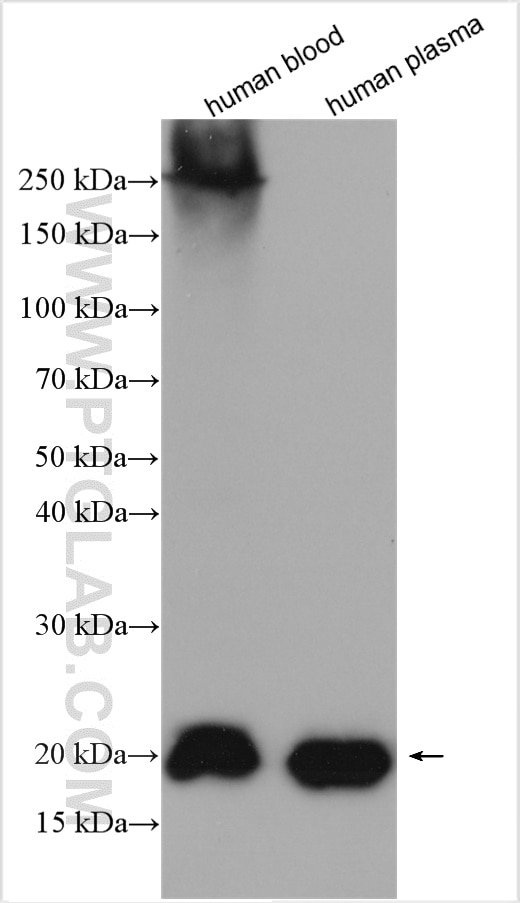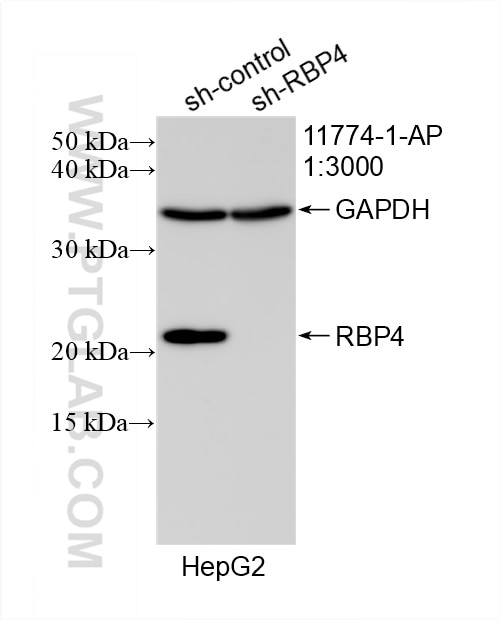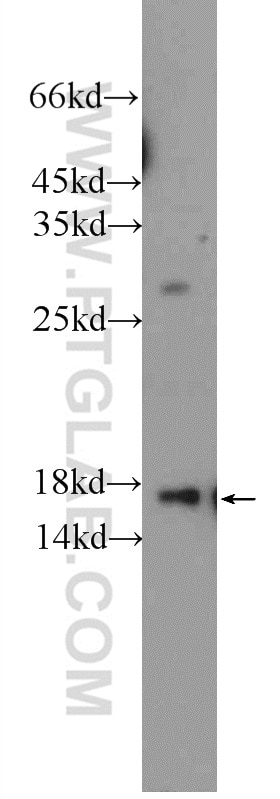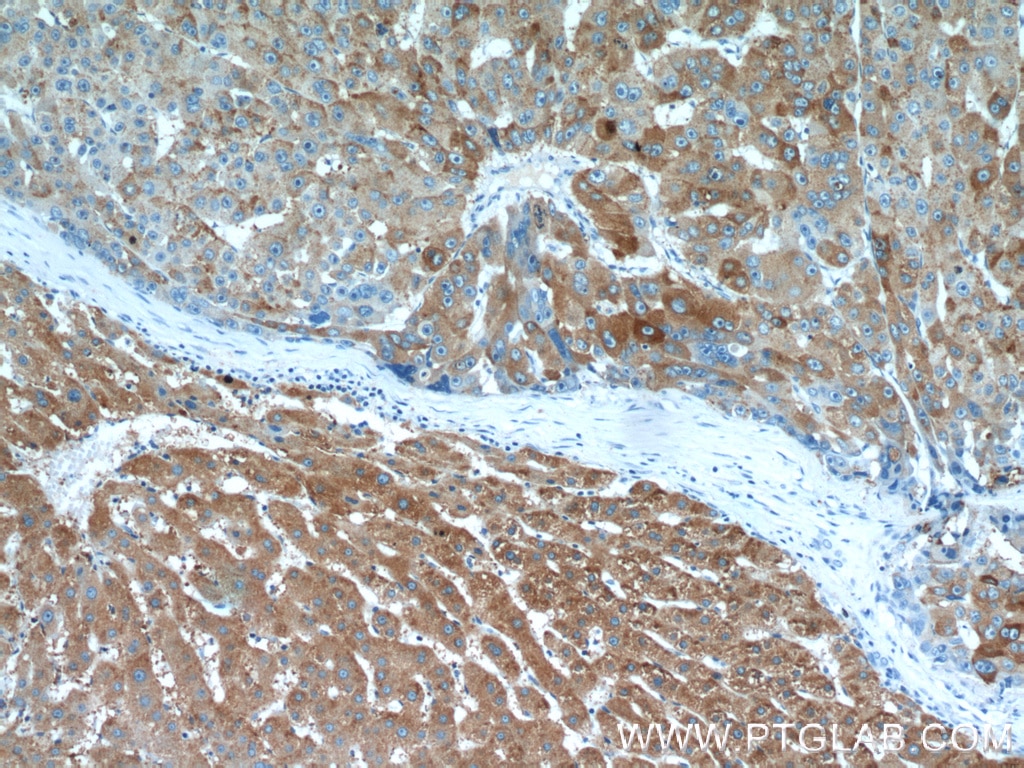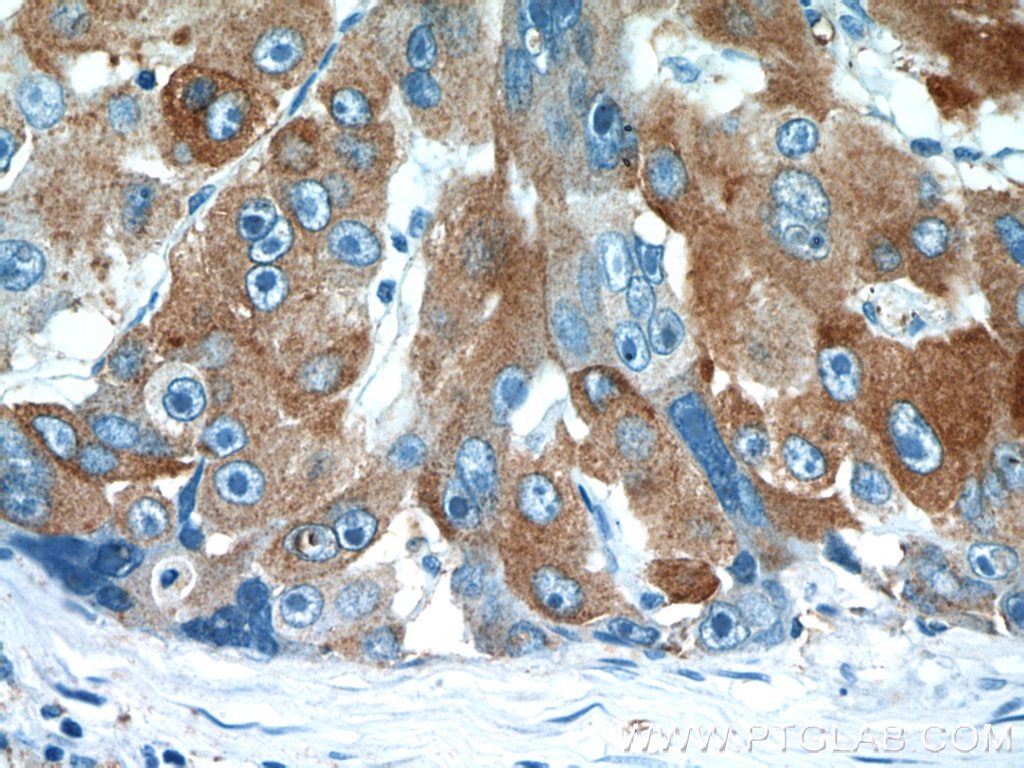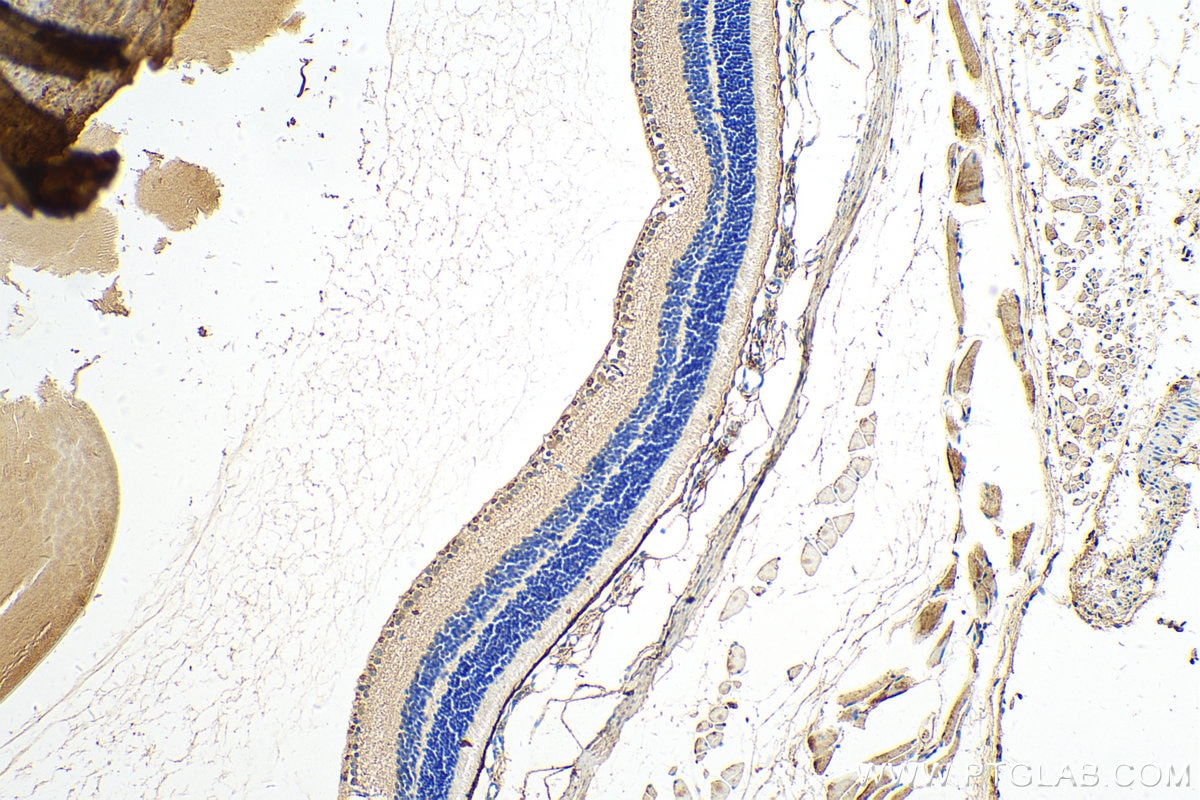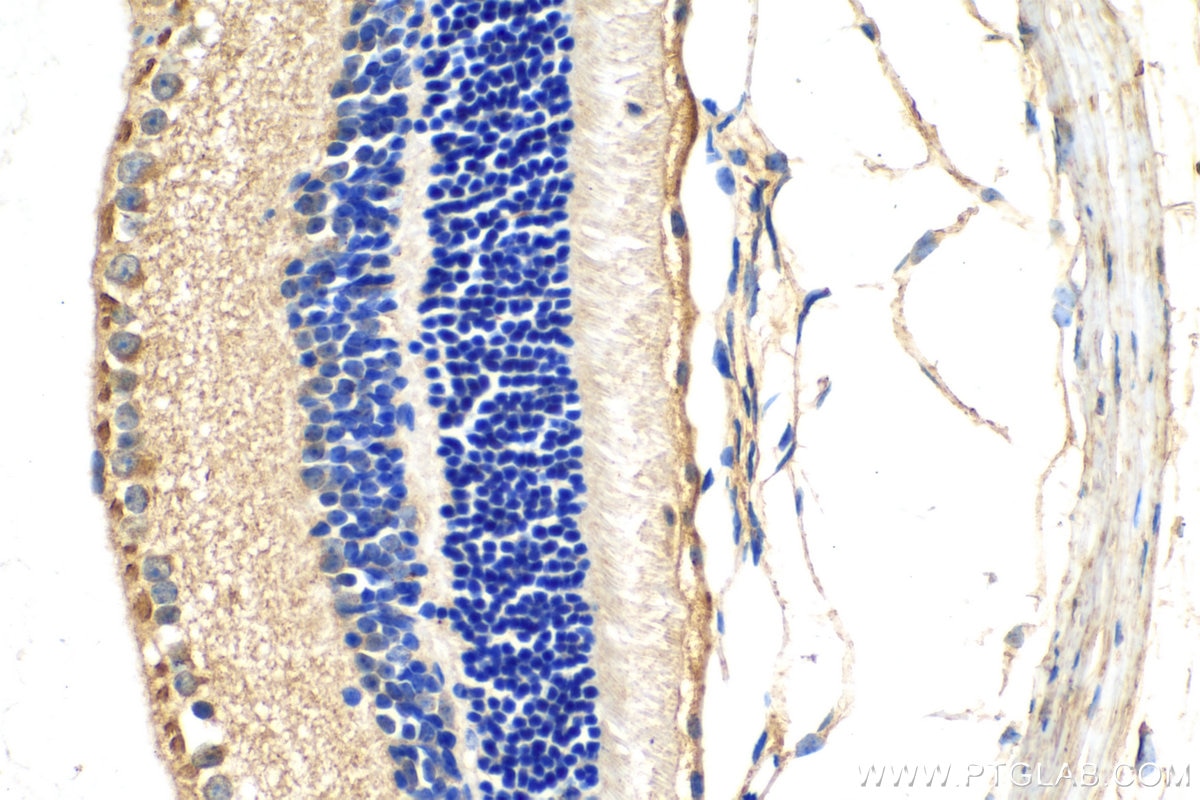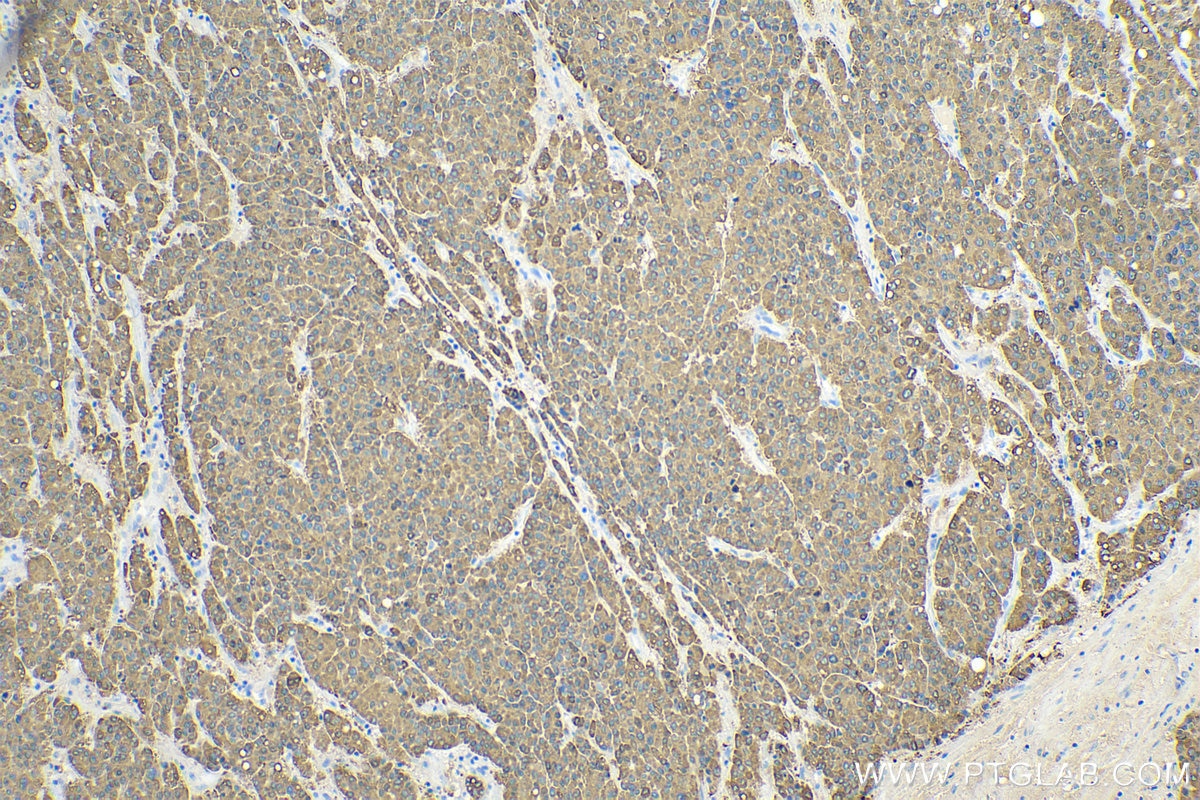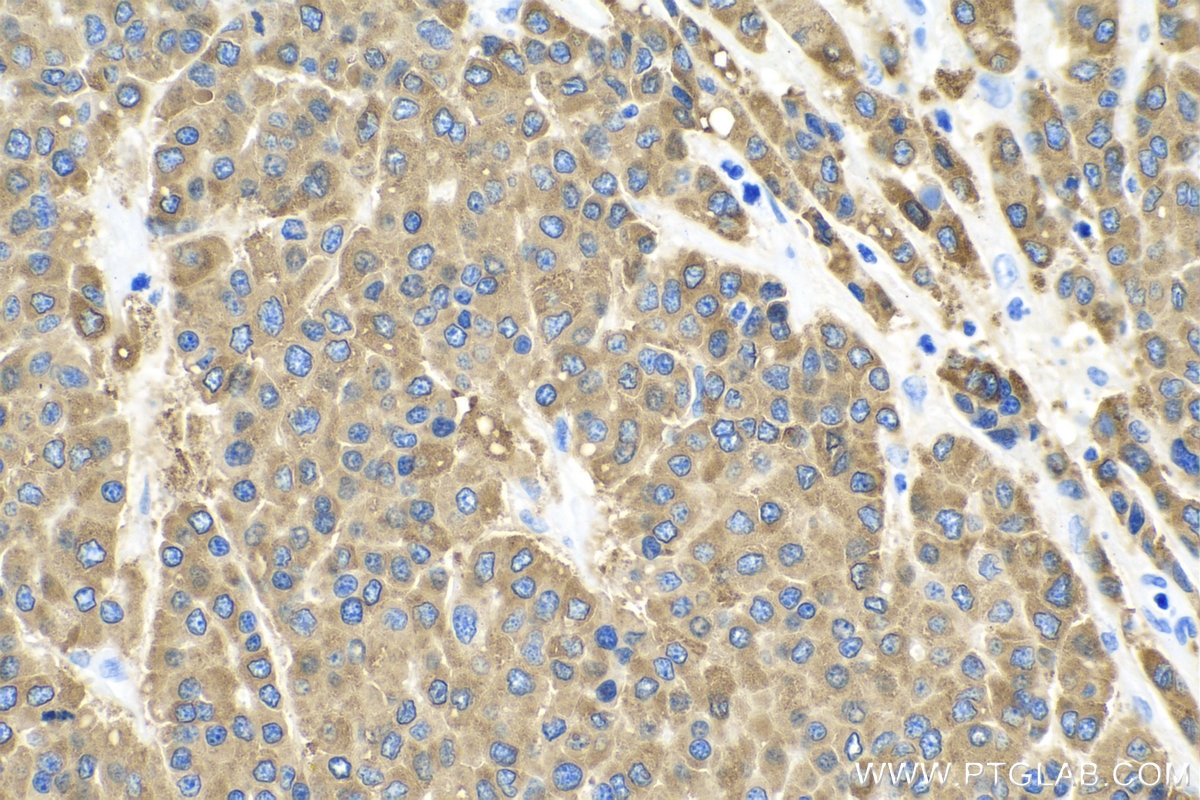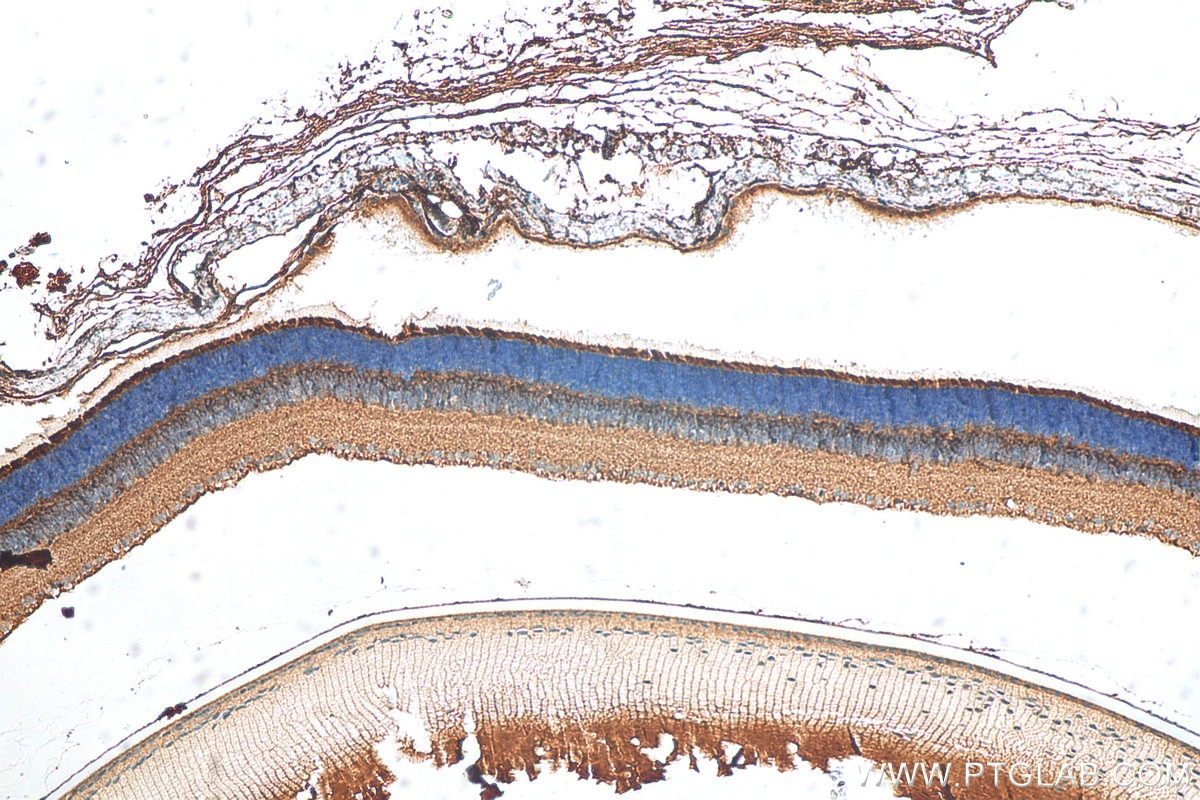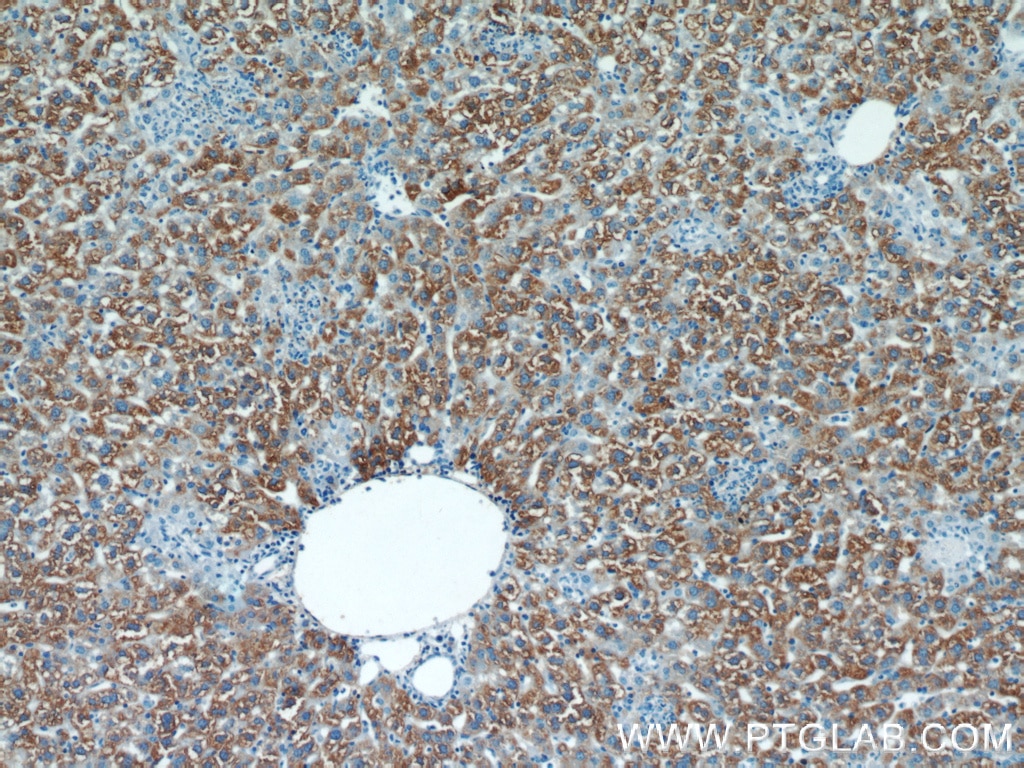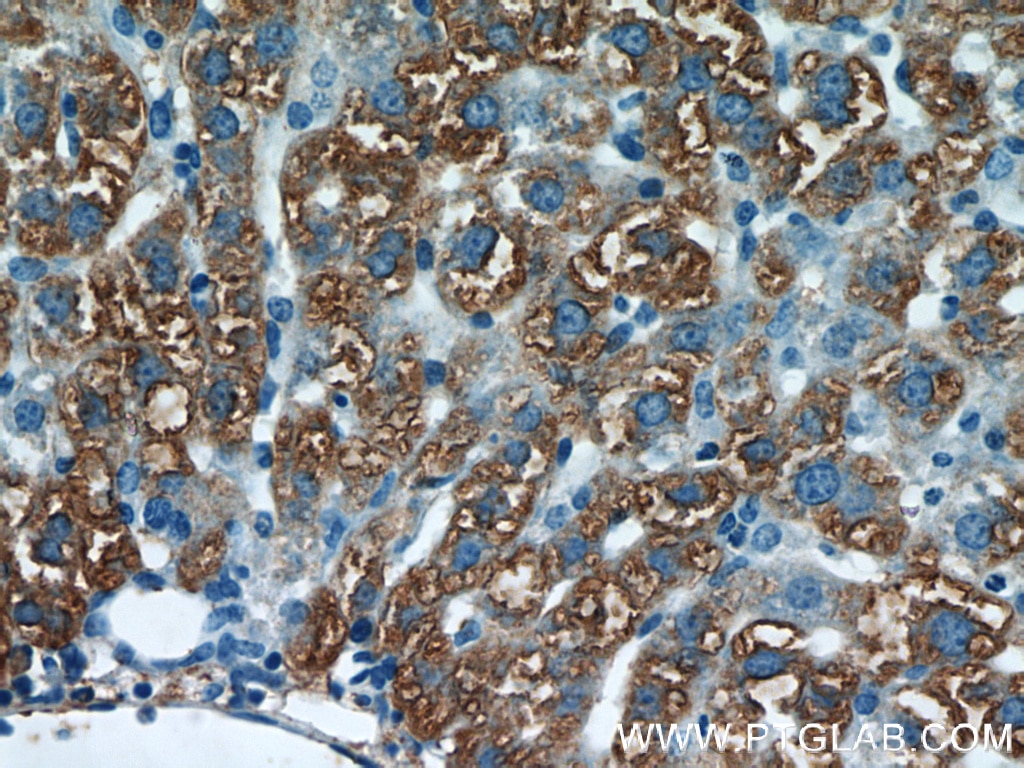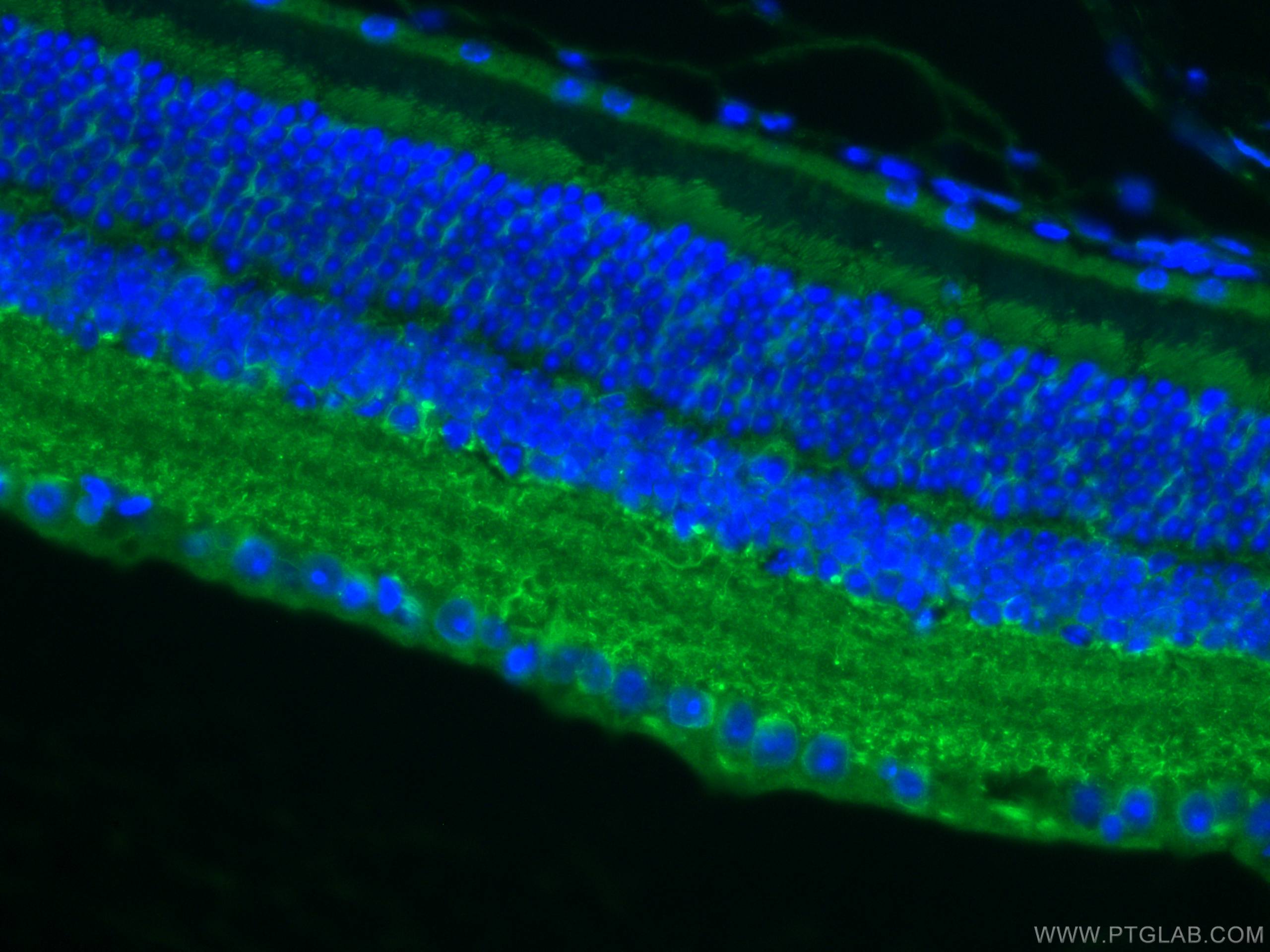Tested Applications
| Positive WB detected in | human blood, HepG2 cells, rat liver tissue, human plasma |
| Positive IHC detected in | mouse eye tissue, human liver cancer tissue, mouse liver tissue Note: suggested antigen retrieval with TE buffer pH 9.0; (*) Alternatively, antigen retrieval may be performed with citrate buffer pH 6.0 |
| Positive IF-P detected in | mouse eye tissue |
Recommended dilution
| Application | Dilution |
|---|---|
| Western Blot (WB) | WB : 1:1000-1:6000 |
| Immunohistochemistry (IHC) | IHC : 1:250-1:1000 |
| Immunofluorescence (IF)-P | IF-P : 1:50-1:500 |
| It is recommended that this reagent should be titrated in each testing system to obtain optimal results. | |
| Sample-dependent, Check data in validation data gallery. | |
Published Applications
| KD/KO | See 3 publications below |
| WB | See 18 publications below |
| IHC | See 7 publications below |
| IF | See 4 publications below |
| CoIP | See 1 publications below |
Product Information
11774-1-AP targets RBP4 in WB, IHC, IF-P, CoIP, ELISA applications and shows reactivity with human, mouse, rat samples.
| Tested Reactivity | human, mouse, rat |
| Cited Reactivity | human, mouse, rat, geese, camelus bactrianus |
| Host / Isotype | Rabbit / IgG |
| Class | Polyclonal |
| Type | Antibody |
| Immunogen | RBP4 fusion protein Ag2448 Predict reactive species |
| Full Name | retinol binding protein 4, plasma |
| Calculated Molecular Weight | 201 aa, 23 kDa |
| Observed Molecular Weight | 23 kDa |
| GenBank Accession Number | BC020633 |
| Gene Symbol | RBP4 |
| Gene ID (NCBI) | 5950 |
| RRID | AB_2252700 |
| Conjugate | Unconjugated |
| Form | Liquid |
| Purification Method | Antigen affinity purification |
| UNIPROT ID | P02753 |
| Storage Buffer | PBS with 0.02% sodium azide and 50% glycerol pH 7.3. |
| Storage Conditions | Store at -20°C. Stable for one year after shipment. Aliquoting is unnecessary for -20oC storage. 20ul sizes contain 0.1% BSA. |
Background Information
RBP4 (retinol-binding protein 4) is a carrier protein that transports vitamin A (retinol) from the liver to the peripheral tissues. Synthesized primarily by hepatocytes and adipocytes as a 21 kDa non-glycosylated protein, RBP4 is secreted into the circulation as a retinol-RBP4 complex. In plasma the RBP4-retinol complex is bound to transthyretin (TRR), which prevents kidney filtration. Two truncated forms of RBP4, RBP4-L (truncated at Leu-183) and RBP4-LL (truncated at Leu-182 and Leu-183), exist by proteolytic process. RBP4-L and RBP4-LL, which do not bind TTR, are normally excreted into the urine but accumulate in the serum during renal failure. Urinary RBP4 has been reported as marker for glomerular disease. RBP4 also was identified as an adipokine that elevated in some INS-resistant states. Measurement of serum RBP4 could be used to assess the risk of INS resistance, type 2 diabetes, obesity, and cardiovascular disease. (18752671, 16034410)
Protocols
| Product Specific Protocols | |
|---|---|
| WB protocol for RBP4 antibody 11774-1-AP | Download protocol |
| IHC protocol for RBP4 antibody 11774-1-AP | Download protocol |
| IF protocol for RBP4 antibody 11774-1-AP | Download protocol |
| Standard Protocols | |
|---|---|
| Click here to view our Standard Protocols |
Publications
| Species | Application | Title |
|---|---|---|
J Neuroinflammation Succinate-induced macrophage polarization and RBP4 secretion promote vascular sprouting in ocular neovascularization | ||
Bioact Mater Bio-inspired chiral self-assemblies promoted neuronal differentiation of retinal progenitor cells through activation of metabolic pathway. | ||
Theranostics Growth hormone receptor disrupts glucose homeostasis via promoting and stabilizing retinol binding protein 4. | ||
Metabolism Disruption of retinoid homeostasis induces RBP4 overproduction in diabetes: O-GlcNAcylation involved. | ||
Virulence Altering retinol binding protein 4 levels in hepatitis C: Inflammation and steatosis matter. |
Reviews
The reviews below have been submitted by verified Proteintech customers who received an incentive for providing their feedback.
FH Azita (Verified Customer) (05-31-2021) | Human spinal cord (cervical) tissue In 1/100 dilution gave fade labelling
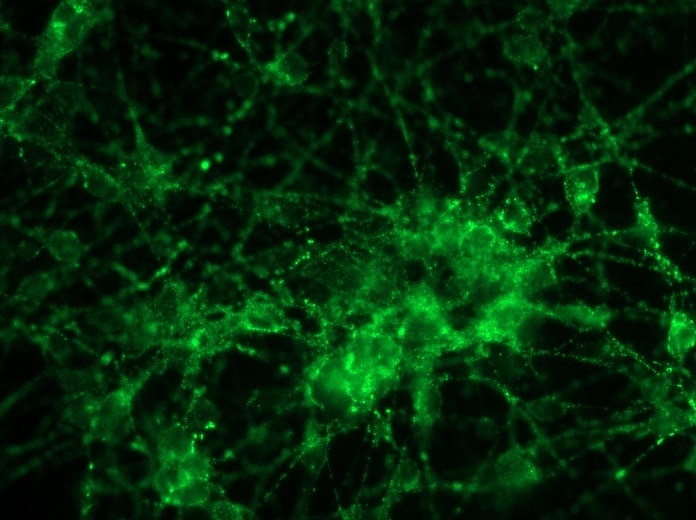 |
